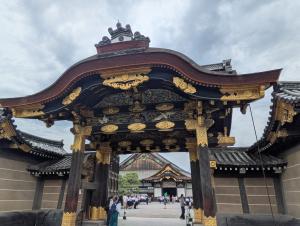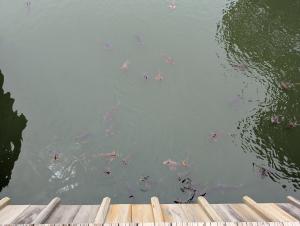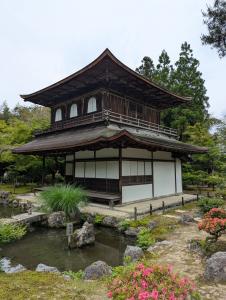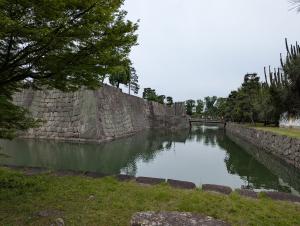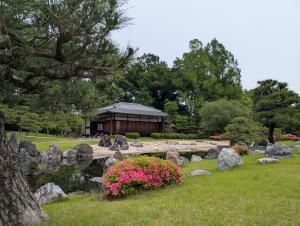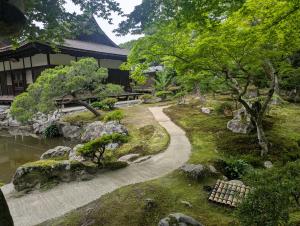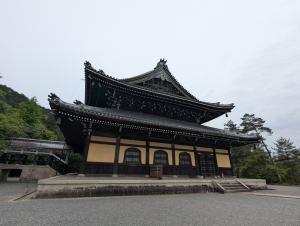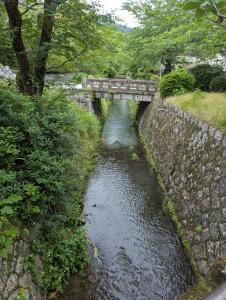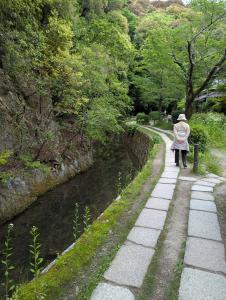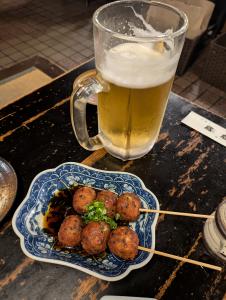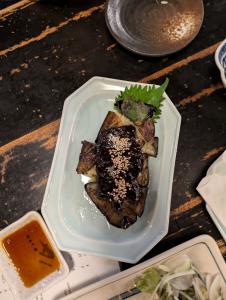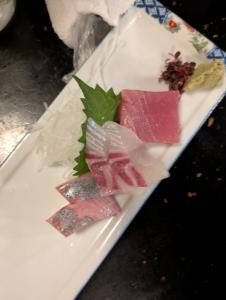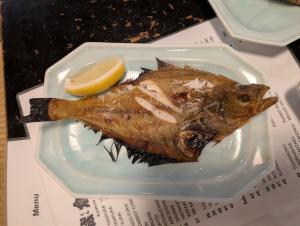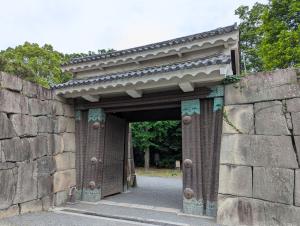Day 11 - Of Temples and Tea
Nijo-jo Castle - Tea Ceremony - Ginkaku-ji Temple - Philosopher's Path
We started the day with a quick taxi ride to the gates of Nijō-jō Castle. This shogun castle is a stunning monument to the power of the warlords who effectively ruled Japan for centuries. Nijō-jō is built on land that was originally occupied by the 8th-century Imperial Palace, which was abandoned in 1227. The castle was constructed in 1603 as the official Kyoto residence of the first Tokugawa shogun, Ieyasu. It’s also where, in 1867 the shogun returned power to the Emperor at the beginning of the Edo period. It’s a fascinating place, with superb (almost rococo) interiors, and the grounds contain expansive gardens which are perfect for a stroll.
After we finished walking the castle grounds, we took a short 15-minute walk to a 150-year-old tea house where we had a reservation to experience a traditional matcha tea ceremony. We were joined by a large group from London. At the entrance, we removed our shoes and changed into provided slippers, and then we were greeted by Kaori, our host, dressed in a beautiful kimono. She took us into the garden waiting area, described the tea plant and the type of leaves used primarily for matcha, and then brought us into the Tea House. Traditionally, the host would make tea for each guest, but she wanted to treat this like a class and therefore, we each had a place setting with a matcha cup and whisk. We were given traditional Japanese sweets which accompany matcha tea. Kaori described and performed the steps to the traditional Japanese tea ceremony, then invited each of us to perform the ceremony ourselves to make our own cup of matcha tea. It's a carefully crafted process made up of intricate hand placements, movements, pouring and being respectful of the tea and host-to-guest relationship. We learned to whisk our own matcha and enjoyed the end product.
After tea, we headed down a nearby shopping Street where we scooped up some onigiri and chicken karaage. A quick lunch at a nearby bus stop and then another taxi ride to the northern start of the Philosopher's Path, Ginkaku-ji Temple.
At the northern end of the Path of Philosophy, Kyoto’s famed Silver Pavilion (Ginkaku-ji) is an enclosed paradise of ponds, thick moss, classical Japanese architecture and swaying bamboo groves. In 1482 shogun Ashikaga Yoshimasa constructed a villa at this fine mountainside location, which he used as a genteel retreat from the turmoil of civil war. Although Ginkaku-ji translates as Silver Pavilion, this is simply a nickname to distinguish it from Kinkaku-ji (the Golden Pavilion on the other side of town). The main hall, which overlooks the pond, was originally covered in black lacquer. After Yoshimasa’s death it was converted to a temple. The temple belongs to the Shōkoku-ji sect of the Rinzai school of Zen. The Zen temple grounds feature a multistoried temple where the first level is designed after a traditional Japanese pavilion, and the second level after Chinese influences in art and architecture. There were multiple gardens to admire and invoke serenity and mindfulness, including rock islands and cherry trees.
Buddhist temple complexes spread out like a string of pearls along the Path of Philosophy in Northern Higashiyama. The path follows a cherry-blossom-lined canal and offers some of the prettiest scenery in Kyoto. We dipped in and out of temples as we strolled along, taking time to ponder as did the namesake 20th-century philosopher Nishida Kitarō. At one point we even saw a Catholic school. Kyoto is full of small surprises.
Our final stop was at Nanzen-ji. Nanzen-ji began its life as a retirement villa for Emperor Kameyama. Upon his passing in 1291, it was dedicated as a Zen temple. It operates now as the headquarters of the Rinzai school of Zen. At the entrance to the temple stands the San-mon gate (1628), its ceiling adorned with Tosa- and Kanō-school murals of birds and angels. Beyond the San-mon is the Honden (Main Hall), with a dragon painting on the ceiling. We were only able to visit the main hall, but so many of the screen paintings were visible and exposed the open air. It's a wonder they've survived the last 400 years.
After a long day of philosophizing and temple walking, we took in an izakaya dinner. We sampled on multiple dishes including cold fresh tofu, thinly sliced and deep fried squid, chicken meatballs, a whole white fish, eggplant marinated in miso, and sashimi. It is the kind of restaurant where if you don't have a reservation you can expect to wait hours to get in. We went early enough that we were able to get a table; although we ate Ozashiki style, sitting on a tatami mat on the floor of a raised platform. It was a great evening.
Points earned today!
| L | Activity | J |
|---|---|---|
| 4 | Donations | 2 |
| 6 | Foodie (Unique foods) | 6 |
| 1 | Nature Panorama | |
| Historical Panorama | 1 |
